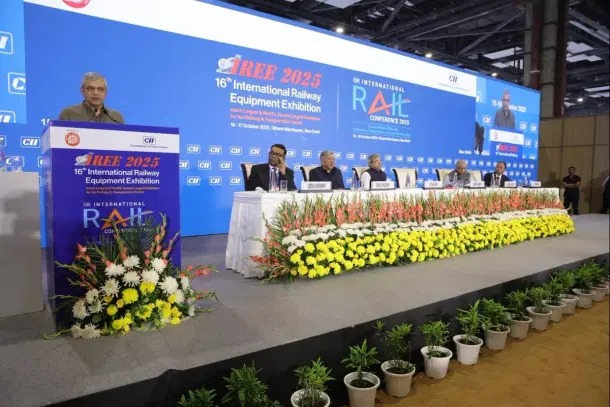Union Minister Ashwini Vaishnaw announced on October 15 that India aims to build 7,000 km of dedicated passenger corridors by 2047 under the government’s Viksit Bharat vision. The new high-speed routes will allow maximum speeds of 350 kmph, with operational speeds of 320 kmph, and are expected to transform the country’s rail network.

Advanced Technology for Speed and Safety
Speaking at the 16th International Railway Equipment Exhibition (IREE) 2025 in New Delhi, Vaishnaw said the corridors will feature indigenously developed signalling systems and advanced operations control centres, combining high speed with enhanced safety standards.
Next-Generation Trains
The minister also outlined upgrades across India’s flagship trains, including Vande Bharat 4.0, Amrit Bharat 4.0, and future manufacturing standards. “Vande Bharat 4.0 will set a new benchmark in performance and passenger experience,” Vaishnaw said, highlighting improvements like superior seating, enhanced toilets, and refined workmanship.
Amrit Bharat 3.0, using push-pull technology, is being developed for long-distance routes, while the 4.0 version will introduce new trainsets and locomotives, expected to undergo testing within 36 months.
Modernisation Under PM Modi
Vaishnaw credited Prime Minister Narendra Modi for ushering in “a decade of modernisation,” noting the construction of 35,000 km of new rail lines and 46,000 km of electrification over the past 11 years.
India’s Global Railway Footprint
The minister highlighted India’s growing global presence, with domestically built locomotives being exported to Africa and Australia. Currently, 156 Vande Bharat, 30 Amrit Bharat, and four Namo Bharat trains are operational.
Landmark Engineering Projects
Vaishnaw also pointed to engineering achievements such as the Chenab Bridge, the Pamban vertical-lift sea bridge, and the Bairabi-Sairang bridge, demonstrating India’s rapid progress in railway modernisation and infrastructure development.
